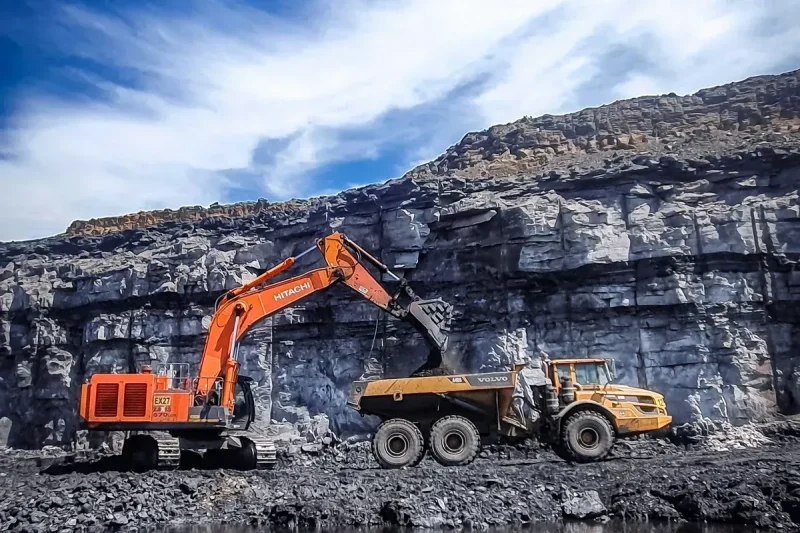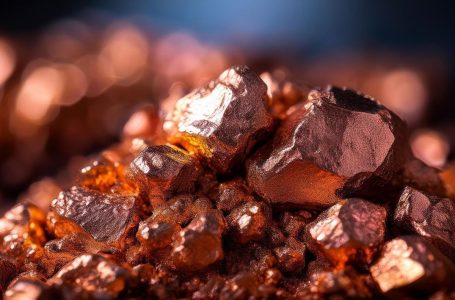Johnson reveals Trump’s wishes on delivering huge policy overhaul in closed-door meeting
Mine Sites Leveraging AI, Predictive Technology to Boost Efficiency and Protect Workers

Modern mining operations aren’t always quick to embrace new technologies, but companies that do so often find they can improve yields, as well as produce better corporate margins and profitability.
At the recent MiningTech North America event, held in Burnaby, BC, speakers focused on how mining companies are integrating artificial intelligence (AI) and other technology to improve resilience and minimize downtime.
While adding these elements can introduce complexity, the consensus was that the right approach can make a real difference, not only for site operation, but also for employee health and happiness.
Asset management systems key for mine site operation
Maintaining operations at a mine site can involve tens of thousands of components, ranging from haul trucks to electrical infrastructure and even site employees. While new technologies have allowed mines to provide data on these many different components, they also add to the complexity of any mine site.
In his MiningTech North America presentation, Andrew Pruett, CEO of CoGo, broke down some of the challenges mines face and how robust asset management can be used to minimize downtime.
Pruett, whose background in technology allowed him to work on asset management systems in the oil and gas sector, recalled a story from his first year working in the mining industry.
He was onsite at a mine in temperatures as cold as -40 degrees Celsius when the power went out. The situation not only posed challenges for equipment, but was also dangerous for employees.
Management needed to account for all workers while investigating the cause of the power outage. Pruett explained that the team was prepared for this situation, ascertaining the status of critical systems, such as the mine’s wastewater system, which could freeze quickly, and establishing generators to power critical components.
The problem turned out to be the result of an excavator severing a power line.
When Pruett asked why there wasn’t an asset management system, the general manager said, ‘It’s my job to do this.”
For Pruett, this response showed how critical people are to the operation of a mine; however he also saw a flaw in how the site was run. The general manager was able to draw from an understanding of the complete mining operation and decades of work within the sector, but he was the only one who knew what to do.
The speedy recovery hinged on the knowledge of one person.
That raised further questions. What would happen the general manager wasn’t there? What would happen when he retired? Shortly after, the company installed an asset management system.
Pruett and his company specialize in industrial asset resilience, which is not just about mitigating risks, but also about how an operation recovers from problems when they inevitably arise.
“You’re going to have people that are hurt, (but) nobody wants to talk about that,” he said. “You’re going to have vehicles that are damaged, you’re going to have transformers that blow up, you’re going to have belts that burn out motors. It’s just going to happen, but it’s how we’re able to recover from that that’s important.”
CoGo is focused on developing asset management systems that use technology that can be accessed remotely through the Microsoft Dynamics 365 ecosystem. The systems integrate with internet of things devices and AI to create predictive maintenance schedules, manage overall risk for events that can be foreseen and help recover from things that can’t, like natural disasters. Essentially, they optimize operations and improve company margins.
One component is using sensors to monitor every asset at a mine site. Operators can see in real time how a piece of equipment or infrastructure is operating and if it requires maintenance. This allows companies to schedule maintenance instead of letting critical equipment fail, which helps to minimize downtime.
Using AI and predictive technology to help mine workers
Beyond equipment, mine resiliency revolves around the health and wellbeing of employees.
When FoxMed founder Joao Gaspar moved with his wife from South Africa to Williams Lake, BC, to start a physiotherapy clinic, he discovered that most of the clients were involved in forestry or mining.
At MiningTech North America, he told the story of how the clinic was quickly overwhelmed by the number of local workers who needed therapy for work-related injuries.
Gaspar began using predictive technology to understand how workers were being injured and how to mitigate these problems. One example he used was haul truck operators suffering from lower-back injuries.
He found that often different operators had different truck setups based on height and weight. A simple suggestion he made was to change scheduling so that operators on specific trucks would have similar proportions.
While carrying out tests, Gaspar discovered a case study with a similar methodology was being carried out in Australia. The results from his testing and the study in Australia were nearly identical.
“Currently, this technology in Australia is looking at about 130,000 workers, and they have had some good results. They had a 69 percent reduction in industry costs in year one and 95 percent in year two,” Gaspar said.
He also spoke about working with companies to train workers on how to move better with AI.
Gaspar uses this technology to capture videos of workers in the field, and these videos are then analyzed with AI. Once the analysis is complete, Gaspar is provided with a report that grades how an employee moves and how they can improve their movements to reduce injury.
Technology’s important role in the future of mining
The speakers at MiningTech North America represent a small portion of the thousands of technology companies working in the resource sector, but they outlined important challenges for the industry.
Understanding all assets at a mine site is critical for operators, whether they are looking at site machinery, electrical grid components or people essential to operations. New technologies can provide at-a-glance overviews of site status, helping to predict when problems may arise and how to better plan for proper maintenance.
Applying the right kind of technology in the right way can help companies maintain uptime and optimize mine sites.
Downtime and lost productivity can be far more costly than preventative maintenance in the long run. Ultimately, new technologies can help ensure profitability for companies and improve value for shareholders.
Securities Disclosure: I, Dean Belder, hold no direct investment interest in any company mentioned in this article.









